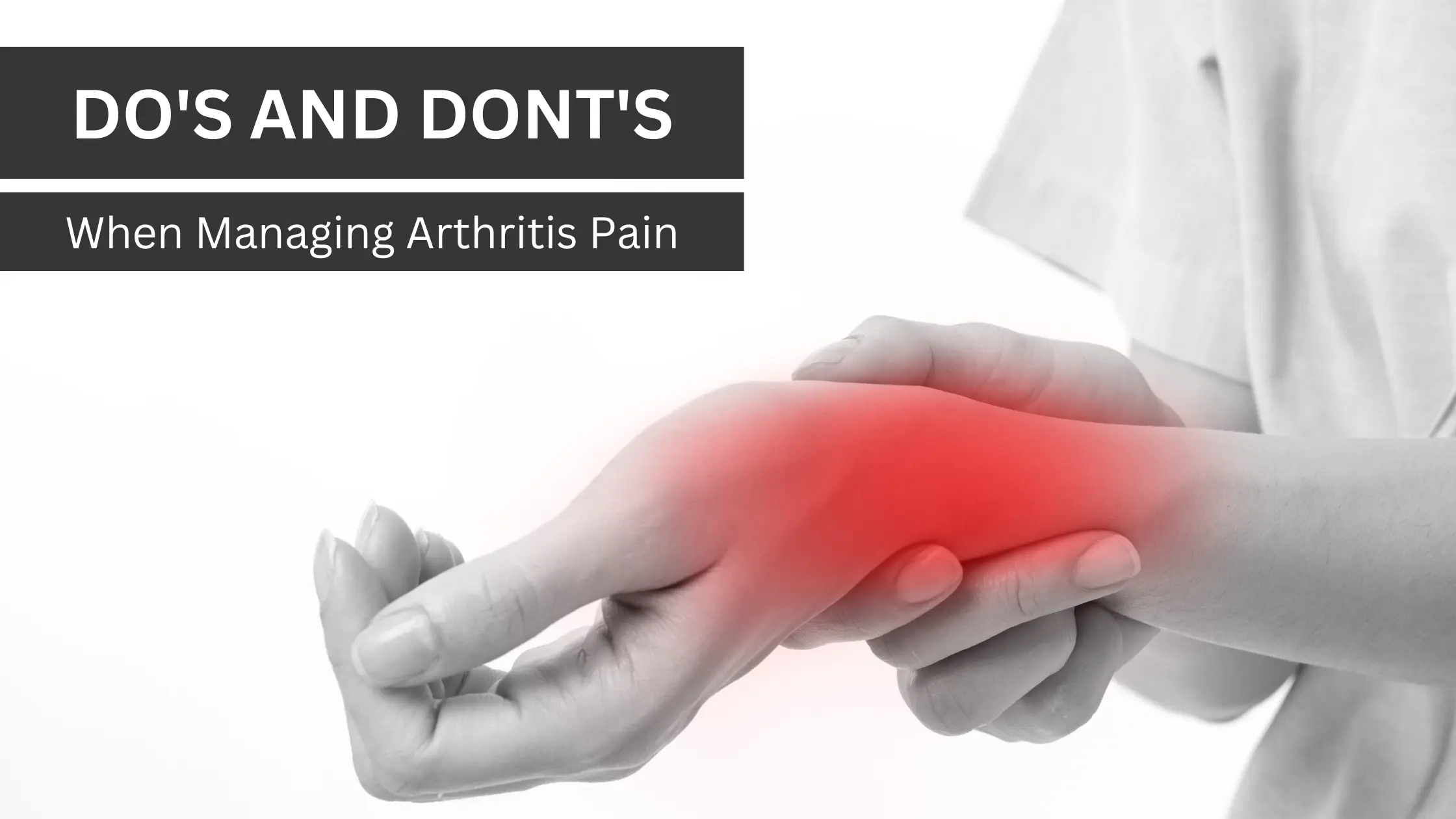More than 15 million adults in India suffer from some form of arthritis. Arthritis is a condition that causes pain and inflammation in the joints. It can affect people of any age but is most common in adults over 65. There are many different types of arthritis, but the most common ones Indians suffer from are osteoarthritis and rheumatoid arthritis.
Managing Arthritis Pain
There is no one answer to the question of how one feels who has arthritis, as the condition can vary greatly from person to person. Some people with arthritis may only experience mild discomfort, while others may suffer from chronic pain and inflammation. For some, the pain can majorly impact a person’s quality of life, making everyday activities difficult or impossible to perform.
In general, however, living with arthritis can be difficult and frustrating. Here are some dos and don’ts that can help you with Arthritis Pain and improve the quality of your life greatly.
Basic Do’s & Don’ts That Everyone Who Has Arthritis Must Follow
- First, DO keep moving
Exercise is important for people with arthritis because it helps to maintain joint flexibility and muscle strength. It also reduces pain and fatigue. Just be sure to start slow and build up gradually.
Please don’t overdo it, though. Too much exercise can make your arthritis worse. So find a balance that works for you. Avoid exercises like
- Running
- Jumping
- Tennis
- High-impact aerobics
- Repeating the same movement, such as a tennis serve, again and again
Another big DO is to get enough sleep. When you’re tired, your pain will likely feel worse. So aim for 7-8 hours of sleep each night.
You should avoid a few things if you want to manage your arthritis pain effectively.
- Don’t smoke cigarettes – smoking is one of the worst things you can do for arthritis (and your overall health). And try to limit your alcohol intake, as drinking too much can also make your pain worse.
- Finally, stay positive and focus on what you can do rather than what you can’t do. Having a positive outlook has been shown to help people better cope with chronic pain like arthritis.
Do’s and Don’t for medication in Arthritis Pain
As we all know, arthritis is a painful condition that can make even the simplest tasks seem impossible. But did you know there are ways to ease the pain and make life a little easier? Here are some do and don’ts for medication in arthritis pain:
- DO take over-the-counter medicines such as ibuprofen or aspirin to help relieve pain and inflammation.
- Don’t take more than the recommended dosage of these medications. Doing so can increase your risk of developing serious side effects.
- DO consult with your doctor before taking any new medications, even if they are available over the counter. It is especially important if you have other medical conditions or are taking prescription medications.
- Remember to stay hydrated! Drinking plenty of water can help reduce swelling and inflammation.
- DO get regular exercise. While it may be difficult to move in pain, exercise can help reduce stiffness and improve joint function. Just be sure to start slow and gradually increase your activity level.
- Don’t put too much pressure on yourself. Trying to do too much too soon can make your symptoms worse. Take things at your own pace and listen to your body – rest when you need to, and don’t push yourself too hard.
Do’s and Don’t for managing everyday life with Arthritis Pain
If you have arthritis, managing your everyday routine is important to help reduce pain and inflammation. You can do a few things to make your daily life easier.
- First, try to stick to a regular schedule.
- This means going to bed, waking up at the same time each day, and eating healthy meals at regular times. Having a set routine will help your body feel better and reduce pain.
- Second, get enough exercise. Exercise helps improve joint function and reduces pain. But be sure to talk to your doctor before starting any new exercise program. You don’t want to make your pain worse.
- Third, eat a healthy diet. Eating healthy foods helps reduce inflammation throughout your body, leading to less pain. Be sure to eat plenty of fruits, vegetables, and whole grains. And limit processed foods, sugary drinks, and red meat.
- Fourth, take breaks during the day. If you’re doing an activity that worsens your pain, take a break for a little while. Resting will help reduce pain and inflammation.
- Fifth, use heat or cold therapies. Applying heat or cold to painful joints can help reduce pain and swelling. Try using a heating pad or taking a hot bath for heat therapy. Or try ice packs or cold compresses for cold therapy.
The Takeaway:





